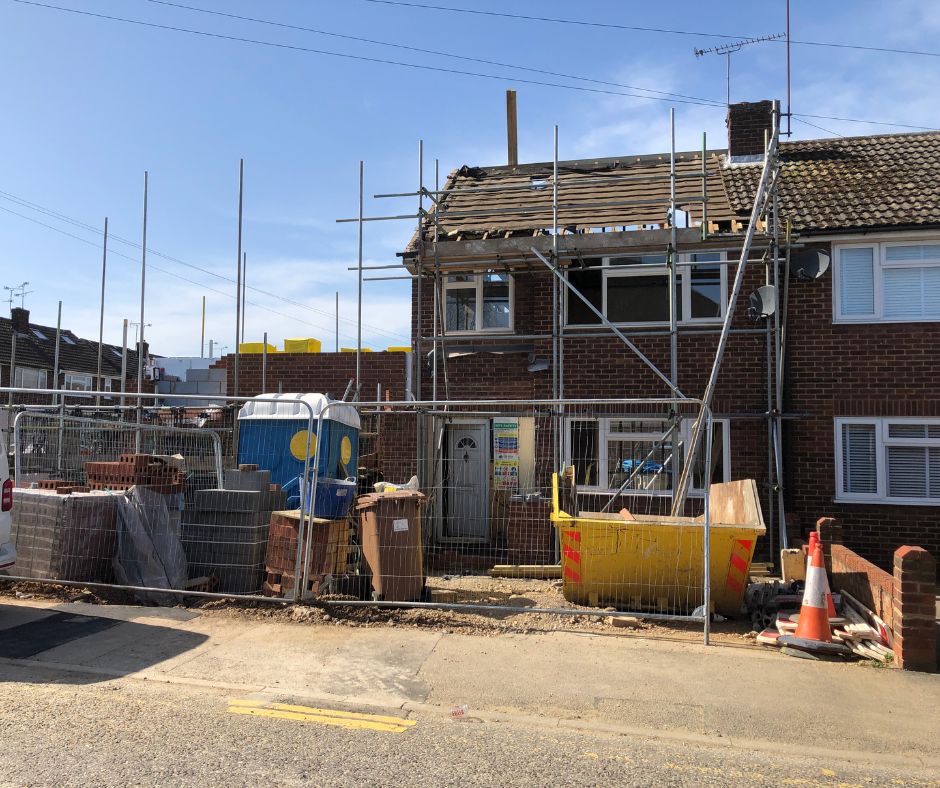A cutting-edge technique that is transforming the construction of commercial and industrial buildings is tilt-up construction. For anyone wishing to carry out a lasting, reasonably priced construction project, they are an excellent option due to their knowledge and commitment to quality. For projects of any size, JAMISON CONSTRUCTION stands out as a leader in the field, known for its efficiency, reliability, and expertise in handling large-scale tilt-up construction projects. This tutorial will walk you through all of the essential phases of tilt-up construction, from planning to execution, and explain why it is a common option in the modern building sector.
What is Tilt-Up Construction?
Tilt-up construction entails creating concrete panels immediately at the process web page. Once cured, those panels are tilted up and secured to form the partitions of a building. Unlike conventional techniques that depend upon pre-solid partitions transported to the website, tilt-up construction integrates the casting method in the vicinity, reducing logistical complexity and making an allowance for quicker project timelines. It is a practical solution for huge homes like warehouses, shopping facilities, and office areas, imparting price efficiency whilst maintaining durability.
Benefits of Tilt-Up Construction
The appeal of tilt-up production lies in its several benefits, from reduced project costs to quicker execution. Since the concrete panels are poured website, there’s no want for steeply-priced transportation or a garage. The approach also shortens creation timelines by way of enabling a couple of obligations—like casting, curing, and lifting—to occur simultaneously. Additionally, tilt-up construction is energy-green, supplying terrific insulation for massive buildings, which reduces long-term operating fees. Its adaptability also allows architects to lay out aesthetically appealing homes, making it a versatile alternative for each practical and visually appealing project.
Key Planning Considerations
Before embarking on a tilt-up construction project, thorough making plans are essential. The assignment starts with an analysis of the web page and soil situations, ensuring that the land can aid the load of the heavy concrete panels. Next, particular architectural and engineering designs are created to determine the exact size and location of the panels. Collaboration among architects, engineers, and contractors is critical during the planning stage to keep away from any luxurious miscalculations down the road. Budgeting is every other crucial element—although tilt-up construction is commonly value-effective, the mission has to be carefully managed to save you surprising prices related to hard work or materials.
The Execution Process
The execution of tilt-up production includes several properly coordinated levels. First, the concrete slab foundation is laid, and this basis often serves as the casting mattress for the panels. Reinforcement materials like rebar or mesh are then delivered to the concrete mixture to make certain sturdiness. After the panels are solid and cured, a crane is used to tilt them into their final role. The panels are then braced and secured, forming the outdoor partitions of the construction. Internal structural elements, such as beams and columns, are delivered later on. As a result, the whole tilt-up construction manner is streamlined, permitting creation crews to complete buildings in a fragment of the time it’d take using traditional methods.
Challenges to Overcome
While tilt-up creation offers numerous advantages, it is now not without demanding situations. The procedure requires cautious attention to detail to make certain the panels are properly cured and lifted without damage. A weather situation, which includes temperature and humidity, can also affect the curing time of the concrete, main to delays. Another mission is the want for large, open spaces on the construction website online to house the panel casting and lifting method. This can be a dilemma in city areas or smaller job sites. Skilled hard work is also essential for executing the complex ranges of tilt-up production, making it important to lease skilled contractors and engineers to supervise the project.
Best Practices for a Successful Project
Several quality practices can help ensure the success of a tilt-up construction undertaking. Proper coordination amongst all team contributors—architects, engineers, and production employees—can save you miscommunication and delays. Adhering to a strict timeline and price range is also important, as any postponement in panel curing or lifting can lead to expensive setbacks. Additionally, using excellent substances for the concrete blend and reinforcement can beautify the durability of the finished structure. Site protection should additionally be a top priority because the manner of lifting and securing huge concrete panels requires specialized gadgets and skilled employees to keep away from injuries.
Sustainability in Tilt-Up Construction
Tilt-up construction additionally gives sustainability advantages, which are becoming increasingly more important in contemporary construction practices. The on-web page casting procedure reduces the want for transportation, reducing carbon emissions. Additionally, concrete has a high thermal mass, presenting herbal insulation that may reduce the want for electricity intake in massive buildings. This approach additionally generates minimal waste compared to standard building techniques. As companies and builders keep prioritizing eco-friendly construction strategies, tilt-up construction gives a sensible manner to satisfy sustainability desires without sacrificing performance or fee.
In the end
Building large-scale structures may be accomplished creatively and effectively with tilt-up construction. It has several advantages, ranging from lower expenses and shorter project schedules to environmental sustainability. A tilt-up construction project’s success, however, is contingent upon meticulous design, competent personnel, and overcoming site-specific obstacles. When done correctly, tilt-up construction may result in long-lasting, energy-efficient structures that satisfy the requirements of owners and developers. Whether you are building a warehouse, office space, or retail center, tilt-up construction provides a streamlined approach to achieving your goals.






